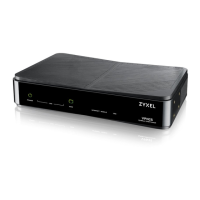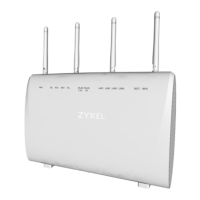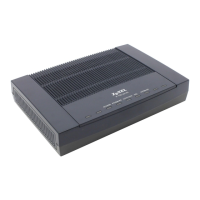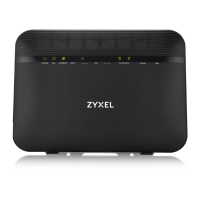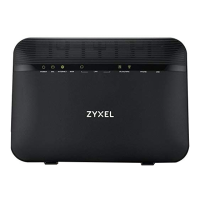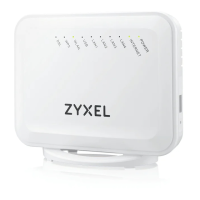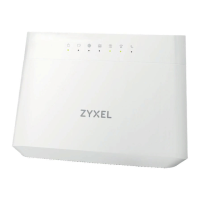Chapter 26 IP Source Guard
VES1724-56 User’s Guide
261
The following table describes the labels in this screen.
26.6 ARP Inspection Status
Use this screen to look at the current list of MAC address filters that were created because the
Switch identified an unauthorized ARP packet. When the Switch identifies an unauthorized ARP
packet, it automatically creates a MAC address filter to block traffic from the source MAC address
Table 115 DHCP Snooping VLAN Configure
LABEL DESCRIPTION
Show VLAN Use this section to specify the VLANs you want to manage in the section below.
Start VID Enter the lowest VLAN ID you want to manage in the section below.
End VID Enter the highest VLAN ID you want to manage in the section below.
Apply Click this to display the specified range of VLANs in the section below.
VID This field displays the VLAN ID of each VLAN in the range specified above. If you configure the
* VLAN, the settings are applied to all VLANs.
Enabled Select Yes to enable DHCP snooping on the VLAN. You still have to enable DHCP snooping on
the Switch and specify trusted ports.
If DHCP is enabled and there are no trusted ports, DHCP requests will not succeed.
Option82 Select this to have the Switch add the slot number, port number and VLAN ID to DHCP requests
that it broadcasts to the DHCP VLAN, if specified, or VLAN. You can specify the DHCP VLAN in
the DHCP Snooping Configure screen. See Section 26.5 on page 257.
SPV Select the variables that you want the Switch to generate and add in the DHCP requests. The
variable options include SP, SV, PV and SPV which indicate combinations of slot-port, slot-
VLAN, port-VLAN and slot-port-VLAN respectively in ASCII code. Alternatively, select private
to have the Switch use the DHCP relay option 82 old format (slot-port-VLAN) in binary. The
Switch uses a zero for the slot value in the DHCP requests. An example of the port number is 1
if you select private while it is 31 in ASCII code if you select SP, SV or SPV.
Delimiter Select a delimiter to separate the option 82 information, slot ID, port number and/or VLAN ID
from each other. You can use a pound key (#), semi-colon (;), period (.), comma (,), forward
slash (/) or space. Select none to not use any delimiter.
Information Select this to have the Switch add the system name to DHCP requests that it broadcasts to the
DHCP VLAN, if specified, or VLAN. You can configure the system name in the General Setup
screen. See Chapter 8 on page 70. You can specify the DHCP VLAN in the DHCP Snooping
Configure screen. See Section 26.5 on page 257.
Remote ID Select this to have the Switch also add the receiving port name as the remote ID to DHCP
requests. Clear this to not add remote IDs to DHCP requests.
Apply Click Apply to save your changes to the Switch’s run-time memory. The Switch loses these
changes if it is turned off or loses power, so use the Save link on the top navigation panel to
save your changes to the non-volatile memory when you are done configuring.
Cancel Click this to reset the values in this screen to their last-saved values.
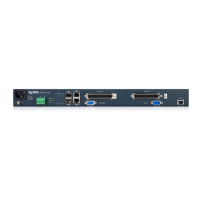
